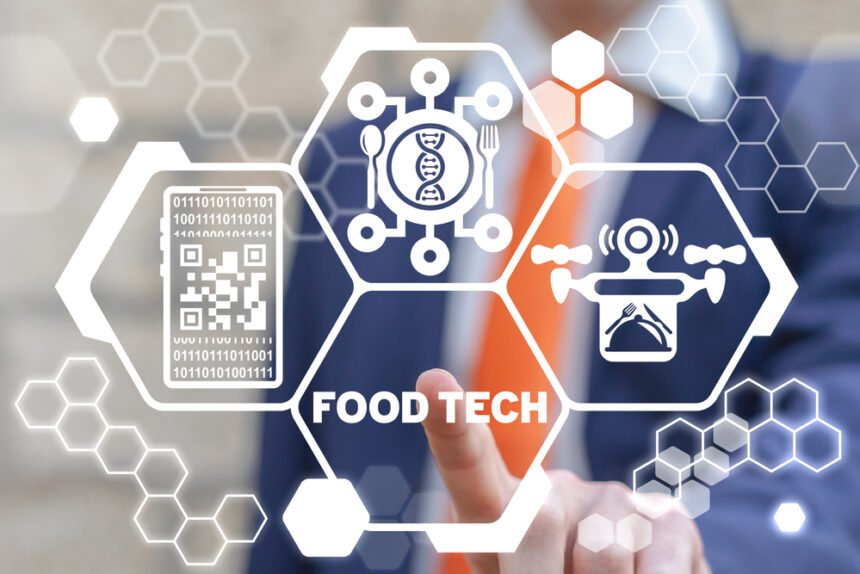Inflation and an impending recession are two huge challenges facing the restaurant industry today. But could artificial intelligence be the solution to both of these problems? Let’s take a look at how AI could help restaurants survive and even thrive in spite of these challenges.
Many factors are contributing to inflation, including the rising cost of labor and the cost of food. This combination is putting pressure on restaurants’ bottom lines, as they have to either raise prices or absorb the costs themselves.
In either case, it’s going to be difficult for restaurants to maintain their profit margins. But AI can help.
Before diving into how AI can play a part in the restaurant industry, let’s first discuss the problems faced by the restaurant industry:
Problems faced by restaurant
Rising gas prices
The cost of running a restaurant is going up due to the rising price of gas. In fact, the price of gas has risen by almost 50% over the last year. As gas prices go up, so do the prices of food and other supplies that restaurants need to purchase.
The cost of food
Food prices are also on the rise, due to inflationary pressures. Droughts and floods are increasing with the effects of climate change becoming more prominent than ever.
High prices are hitting restaurants hard, as they have to either pass on the costs to customers or absorb them themselves – putting pressure on restaurants’ bottom lines.
The cost of labor
Restaurants are also feeling the pinch when it comes to the cost of labor. With the minimum wage increasing in many states, restaurants have to either raise prices or find ways to cut costs. But raising prices is not always an option, as it can drive customers away.
Supply chain disruptions
Supply chain disruptions and the rising cost of inputs are making it difficult for restaurants to maintain their profit margins. Border controls and custom wait times have increased as a result of the pandemic. Around 75% of companies have been impacted negatively as a result of the supply chain disruptions. The food industry in particular has to go through a lot of intermediaries to source their ingredients, and the pandemic has made it difficult to get supplies from overseas.
Restaurants are struggling to keep up with these changes and are having to find ways to cut costs. For example, some restaurants are switching to cheaper ingredients, while others are reducing their portion sizes.
With a recession on the horizon and rising food prices, these challenges are only going to get worse, so let’s discuss the solutions.
How can a scheduling software help?
As labor costs are rising, it has become a challenge for restaurants to keep their employees happy. This is where a restaurant scheduling software is required – to create schedules that are fair for all employees.
The software takes into account the preferences of each employee and creates a schedule that is optimized for both the business and the employees. This helps to reduce labor costs while also ensuring that employees are happy with their schedules.
The scheduling software can also be used to track time off, shift swaps, and team communication. This data improves the efficiency of the business and makes sure that employees are filling up shifts whenever required.
With scheduling software, employees have the liberty to choose their own shifts and have their own preference of work timings – improve management of workers and also increase employee’s retention.
How can AI help in overcoming the challenges
AI robots
Provided the restaurant has sufficient finances to afford the initial investment, an AI robot can help automate monotonous tasks in the long-run. The image below shows AI robots serving the food at tables instead of waiters.
Artificially intelligent robots can be used to carry equipment, crockery and food. The robot uses an obstacle avoidance algorithm to avoid crashing into objects or other humans along the way. The robot can be trained to follow a set path on the restaurant floor. The floor either has QR codes or some marking that can be followed.
Application to reduce food wastage
Professional kitchens waste a lot of food that costs restaurants a significant amount. Through Orbisk, gauge what kind of food is thrown away and in how much quantity. With the rising environmental concerns and food shortages in different parts of the world, the importance of preventing wastage of food is paramount.
Fight climate change by preventing food wastage – something that can very easily be controlled by caterers, restaurants and other stakeholders – in the food industry.
When you avoid wasting food, not only do your costs decrease, but you save the world’s finite resources as well.
Predictive algorithms helps in increasing sustainability
The aim is to make kitchens more sustainable. Sustainability entails making the most efficient use of resources. For instance:
- Use data to analyze which days are the busiest for your restaurant.
- After that, see which hours are the busiest.
- Understand which menu items are the most popular.
Doing this will help you make better use of your resources. The aim is to prevent over ordering of ingredients and preparing more food than the number of orders. With an AI predictive engine, get to know the expected number of orders for each menu item. This data can be used to help determine the amount of food that needs to be prepared in advance.
Predictive algorithms analyze customer behavior and demand, making you better prepared for busy days.
For example, some restaurants are using AI-powered chatbots to take orders and provide customer service. This frees up staff to focus on other tasks, which can help improve efficiency and lower labor costs.
Additionally, the algorithms monitor food costs and make suggestions for menu items that are both profitable and popular with customers. By using AI to streamline operations and keep a close eye on food costs, restaurants can help offset some of the effects of inflation.
Improved marketing through AI
Use AI to create a marketing campaign that is tailored to your target audience. This can be done by using data from your customer database. AI uses data to understand the needs and wants of your target audience to create a marketing campaign that is more likely to convert customers into paying customers.
Read more on how AI is transforming mobile message marketing. Understanding how receptive users are to your messages, tracking online reviews and customer feedback and identifying potential problem areas, newer customers can be reached.
By utilizing data analytics, AI can help restaurants identify customer spending patterns and predict when a slowdown is coming. This allows them to adjust their marketing and promotional strategies accordingly.
A recession is often characterized by decreased consumer spending. As people tighten their belts, they’re less likely to go out to eat as often as they did before. This can have a major impact on restaurants’ sales and profits. As a result, sending out smarter messages will help gain traction in newer markets.
Can AI curb the effects of the coming recession?
AI is already having a major impact on the restaurant industry — and it’s only going to become more important in the years ahead. As inflation and the possibility of a recession loom large, restaurants will need all the help they can get in order to survive.
As discussed in the article, AI can help restaurants in a variety of ways. From reducing food wastage to automating monotonous tasks, AI has the potential to help restaurants survive and even thrive in spite of these challenges.
The food industry is one which will always have customers. It’s just a matter of being able to adapt to technology to keep the revenue stream flowing in.
However, the food industry is also the one that has faced the most number of challekarnges. At first, the restaurant industry was affected by the pandemic. Now, the threat of a recession is becoming more real for the industry. Only the restaurants that are prepared for the challenge – such as the ones that embrace AI – will be the ones that weather the storm most effectively.










